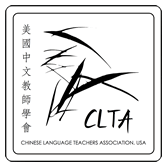From the President
December 2002
Source: CLTA Newsletter 26.3. December 2002, p. 4. December, 2002
On the occasion of our 40 th Anniversary I have been naturally reflecting on how things have changed. I first started coming to CLTA meetings in 1988—not so long ago—but long enough to see some great changes. When I started attending CLTA it was not generally expected that a non-native would use Chinese professionally. Scholars had to know their fields, to read the literature, to comprehend a lecture—but a non-native would not typically give a formal talk in Chinese. Those who started learning Chinese with me were among the first to confront the expectation of professional use of Chinese. On a recent trip to China, I saw on television a young Kodak executive briefing the press in Chinese about his company’s plans for the 2008 Olympics. I am sure that people noted he was a foreigner but it was not the curious spectacle it might have been not so many years ago; He was simply doing his professional duty.
Now each time I present I consider whether or not to make my remarks in Chinese or English. If I use English it would be more comfortable but less appropriate to a Chinese teachers gathering, if I were to use Chinese the weaknesses in my Chinese would be exposed. The bar has been raised for our students and for those non-native teachers among us. My students now expect to use their Chinese language skills professionally. The days of satisfaction with general expertise are past.
This change was brought to light again recently as I was analyzing data for a long-term attrition study. We administrated a battery of tests to some 80 students between 1982-86 and the same battery during 1999. Of the 55 or so students we were able to locate and retest nearly twenty were using Chinese regularly in their professions, thus making them ineligible for our attrition study. Bad for our study, good for them
The scope and range of teaching materials has expanded dramatically as well. When I began my own study of Chinese my teachers debated between Speak Chinese and DeFrancis’ Beginning Chinese. Now we have a multitude of materials from which to choose, from traditional texts to multimedia to web-based courses. We have computer-based and on-line texts and dictionaries. In my role as JCLTA review editor, I have at this moment a half a dozen recent and yet-to-be reviewed texts and CD-ROM courses on my desk— just a small sample of what our field is now producing.
The range of topics presented at this year’s conference is also a testament to the growth of the field, including linguistic analysis, teaching classical Chinese, web and computer-aided instruction, program development, film, materials development, language acquisition, and testing.
As our special guests Professors George Chao, Chauncey Chu, and C.P. Sobelman delivered their remarks to an overflow CLTA banquet, I was impressed by what has become of the vision of these and others of our first members. We are all in their debt. And though much lies ahead for the organization—- indeed we have just begun to realize our growth—we have come far in 40 years. May the next 40 be as productive.
With thanks for your contributions to the association,
Dana Scott Bourgerie
Provo, Utah
